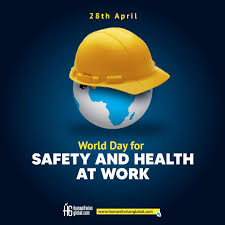“The Hidden Costs of Ignoring Workplace Safety: Legal, Financial, and Moral Implications”.In the fast-paced world of modern business, workplace safety can often fall by the wayside, overshadowed by pressing deadlines and the drive for higher productivity. Yet, the hidden costs of neglecting this critical aspect of workplace management are staggering, spanning legal, financial, and moral dimensions. These consequences not only jeopardize the well-being of employees but also place organizations at significant risk.
The Legal Price of Neglect
One of the most immediate risks of disregarding workplace safety is legal liability. Workplace safety regulations, such as those outlined by the Occupational Safety and Health Administration (OSHA) in the United States, impose strict standards to protect employees. Failing to comply can lead to heavy fines, lawsuits, and even criminal charges in cases of gross negligence.
A recent case highlights the legal ramifications of such oversights. A construction company in Texas faced fines exceeding $1.5 million after multiple safety violations resulted in a fatal accident. Beyond the monetary penalty, the company endured a tarnished reputation and protracted legal battles, consuming resources that could have been used to improve operations and safety measures.
The Financial Fallout
The financial implications of workplace accidents extend far beyond fines. According to a report by the National Safety Council (NSC), workplace injuries cost U.S. employers over $171 billion annually. These costs include medical expenses, lost productivity, legal fees, and increased insurance premiums.
Moreover, the indirect costs—such as recruitment and training of replacement workers, damaged equipment, and interrupted workflows—can often exceed direct expenses. In an increasingly competitive market, these avoidable costs can undermine a company’s profitability and long-term viability.
The Moral and Cultural Toll
While the financial and legal impacts are quantifiable, the moral and cultural costs of neglecting workplace safety are harder to measure but equally critical. Employees who feel unsafe at work are likely to experience lower morale, decreased trust in management, and diminished job satisfaction. Over time, this can lead to higher turnover rates and difficulty attracting top talent.
The human cost of workplace injuries is perhaps the most devastating. Families of injured workers often face emotional and financial hardships, and communities suffer the ripple effects of lost productivity and increased healthcare demands. Companies that fail to prioritize safety risk alienating stakeholders who value ethical business practices.
The Path Forward: A Culture of Safety
To mitigate these risks, businesses must adopt a proactive approach to workplace safety. This begins with cultivating a culture that prioritizes the well-being of employees. Regular training, clear communication, and investment in safety technologies can go a long way in preventing accidents.
Organizations should also conduct routine safety audits and encourage employee feedback to identify and address potential hazards. By involving workers in safety initiatives, companies can foster a sense of shared responsibility and commitment.











